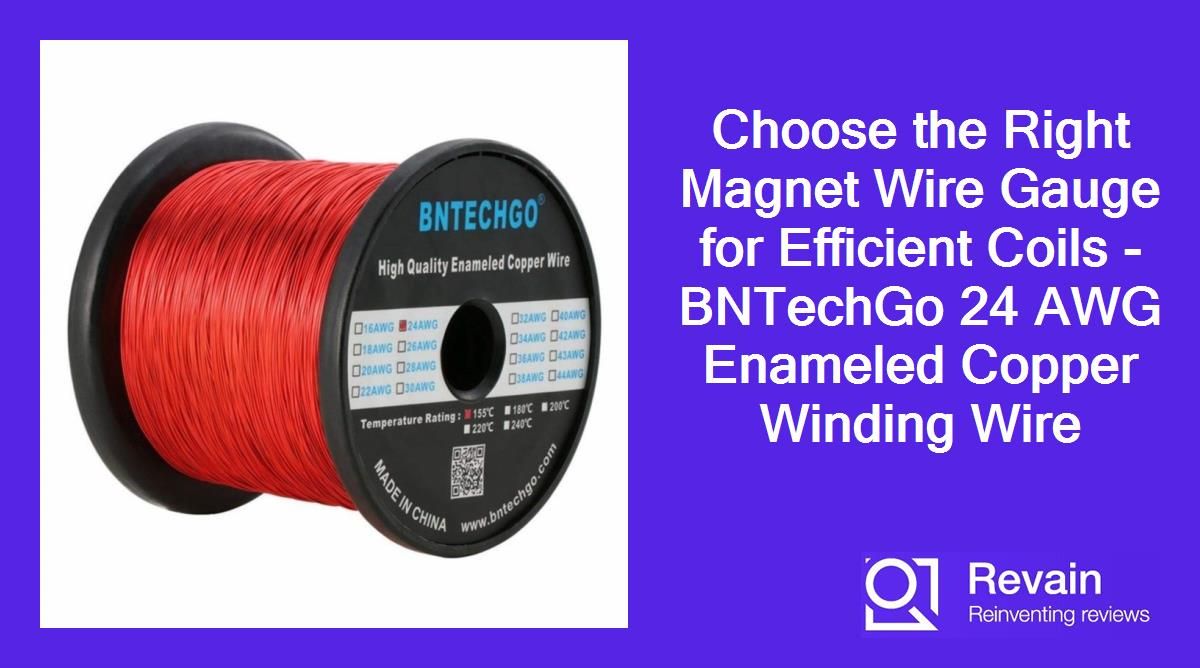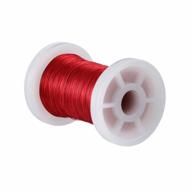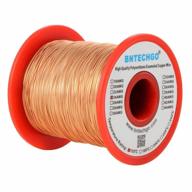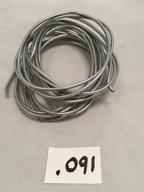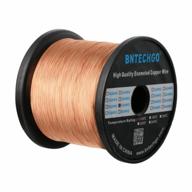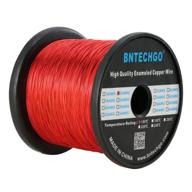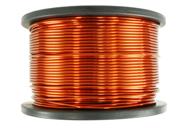How to choose the right gauge magnet wire for your project?
Choosing the appropriate gauge or thickness of magnet wire is crucial for building coils and electromagnets that function efficiently. Here are some key factors to consider when selecting magnet wire gauge:
Current Rating
The gauge of the wire must be able to handle the required current for your project without overheating. Thicker wires like 12 AWG can carry higher current than thinner wires like 30 AWG. Consult wire gauge current limits when choosing.
Coil Resistance
Thinner wires have higher resistance, which can lead to power losses and heat buildup. Thicker wires like 10 AWG will have low resistance allowing efficient power transfer. Evaluate resistance requirements.
Coil Size
If you need compact coils, thinner gauges like 26 AWG will take up less space. For larger coils, thicker 12 AWG may be preferable. Take into account the core size you are winding around.
Flexibility and Workability
Thinner wires are more flexible while thicker ones are stiffer. Consider how easy you want the wire to bend around the core during winding. Also assess solderability if needed.
Cost
Thicker magnet wire is generally more expensive. Factor in cost constraints when selecting gauge. Buying in bulk also helps reduce cost.
Additionally, consider voltage rating, insulation type like polyurethane enamel, and other factors. Consulting magnet wire specification tables helps narrow down your options. With the right gauge choice, your electromagnet or coil will perform as efficiently as possible.
Top products in 🧲 Magnet Wire
How to wind a coil using magnet wire?
Winding a coil using magnet wire involves carefully wrapping the wire around a core to create an inductor. Here is a step-by-step process:
Choose Core Material
Select a core made of ferrite, iron, or other magnetic material. Consider the core's shape and size based on your desired coil properties.
Select Magnet Wire Gauge
Pick an appropriate wire gauge or thickness based on factors like required current rating and resistance.
Prep Core and Wire
- Clean the core thoroughly to ensure wire adhesion.
- Cut the magnet wire to the desired length using wire cutters.
- Strip the insulation at the ends if needed to make connections.
Start Winding
Anchor the wire at one end of the core. Maintain tension as you tightly wrap the wire around the core using a consistent winding technique. Keep windings smooth and close together.
Secure the Coil
At the end, use electrical tape to secure the final wire turn in place. You can also use glue or epoxy for a stronger hold.
Finish the Connections
Solder wires or attach connectors to the coil wire ends. Insulate connections with heat shrink tubing or tape.
Test Coil
Use a multimeter to check resistance. Energize the coil at low power to ensure it performs as expected before full operation.
With patience and proper technique, you can wind uniform, robust coils using magnet wire. Consulting online guides helps refine your winding process.
How to prevent enamel from cracking on magnet wire?
Magnet wire has an enamel insulation coating that can crack from mishandling. Cracks expose the copper and lead to short circuits. Here are tips to prevent enamel cracking:
Avoid Kinking the Wire
Kinking magnet wire causes stress fractures in the enamel. Unroll and work with the wire smoothly avoiding sharp bends.
Manage Proper Tension
Applying too much tension while winding or pulling can stretch the enamel until it cracks. Maintain moderate, consistent tension.
Use Proper Wire Stripping Methods
Roughly scraping off enamel damages nearby insulation. Use specialized strippers or soak in solvents to gently strip the ends.
Prevent Overheating
Heating enamel over 180°C makes it brittle and prone to cracking. Solder quickly using lower heat and avoid prolonged exposure to high temperatures.
Coat with Electrical Tape
Wrapping a thin overlapping layer of electrical tape or insulation around finished coils provides added protection from cracks developing.
Allow Proper Curing
When applying epoxy, varnish, or other liquids to enamel, enable full curing as directed. Insufficient curing leaves the enamel softened and susceptible to damage.
Avoid Mechanical Abrasion
Prevent fraying of enamel by avoiding friction from rubbing against rough surfaces. Use spacers or padding to protect finished coils.
By observing these guidelines during handling, preparation, winding, soldering, and installation, magnet wire enamel insulation can remain crack-free. Taking steps to reinforce and protect the enamel leads to enhanced coil lifespan and performance.
How to solder magnet wire without damaging the insulation?
Magnet wire insulation like polyurethane enamel can easily burn or melt when soldering. Use proper techniques to avoid insulation damage:
Select the Right Soldering Iron Tip
Choose a tip that concentrates heat, like a pointed tip, rather than a wide blade tip which spreads heat across the wire. Controlled heat prevents overheating.
Use a Heat Sink
Clamp a heat sink next to the wire during soldering to dissipate excess heat away from the enameled portion.
Pre-tin Wires
Applying solder to the stripped wire ends before soldering reduces time spent heating the wires when joining.
Use Low Temperature Solder
Solders with low melting points like lead-free solder minimizes exposure to high heat compared to high temperature solders.
Avoid Direct Contact
Prevent direct contact between the soldering iron tip and enamel coating by only touching the exposed copper when soldering.
Apply Heat Quickly
Swiftly heat and remove the soldering iron in under 3 seconds. Extended heating risks enamel damage.
Insulate Afterwards
Cover soldered areas with heat shrink tubing or electrical tape to reinforce the enamel insulation.
With the proper soldering methods, magnet wire insulation remains intact. Construct test joints first to verify your technique before soldering final coils or connections. Let the wire fully cool before handling after soldering to prevent added insulation damage.
How to calculate the length of magnet wire needed for winding a coil?
Determining the required length of magnet wire for winding a coil involves some key parameters and calculations. Here is an overview of the factors and equations:
Core Dimensions
Measure the core area you will wind around including the length and diameter or cross-sectional dimensions.
Number of Turns
Decide the number of wire turns needed based on your desired coil inductance and magnetic field strength.
Mean Length Per Turn
Calculate the average length per loop around the core perimeter using the formula:
Mean Length Per Turn = π x (Coil Diameter + Wire Diameter)For example, winding 30 AWG wire on a 1.5 inch diameter core gives a mean length per turn of 1.5 in. x π = 4.71 inches.
Total Wire Length
To get the total wire length multiply the Mean Length Per Turn by the Number of Turns.For example, with a Mean Length Per Turn of 4.71 in. and 250 turns:
Total Length = 4.71 in. x 250 turns = 1,177.5 inchesAn extra 5-10% of wire is added to account for wastage and connections.
Knowing the total magnet wire length required for your particular coil design ensures you purchase the correct quantity. Consulting magnet wire calculators simplifies the estimation process.






